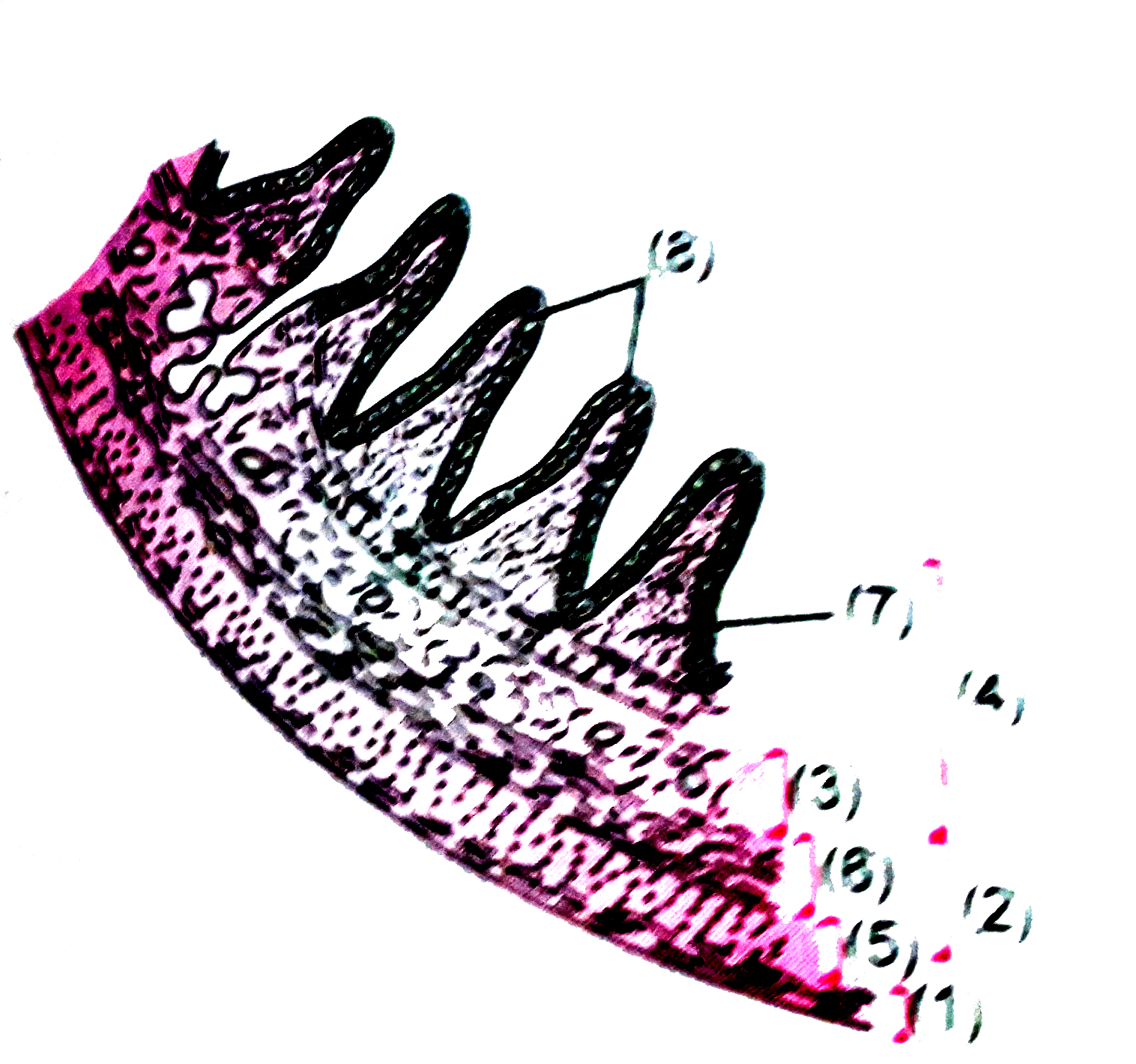Which part of alimentary canal of cockroach has an outer layer of thick circular muscles and inner cuticle forming six highly chitinous plates called teeth?
Gizzard
Crop
Proventriculus
Both A and C
The correct Answer is:D
Gizzard or proventriculus is the part of alimentary canal of cockroach has an outer layer of thick circular muscles and inner cuticle forming six highly chitinous plate called teeth.
Similar Questions
In which part of alimentary canal of cockroach is invagination of cuticle found ?
View SolutionFigure depicts microsopic structure of the intestinal wall of alimentary canal. Study the figure and answer the following question?
(i) The wall of alimentary canal consists of 4 main concentric coats labelled as 1,2,3 and 4. Name these coats.
(ii) The coat marked 2 has two layers marked as 5 and 6. Between these two layers is a network of nerve cells and para-sympathetic nerve fibres called..... It controls the .......
(iii) The coat marked 3 is highly vasucular connective tissue having another network of nerve cells and sympathetic nerve fibres called...... . it controls the secretion of ........
(iv) Name the parts labelled as 7 and 8

View Solution
Knowledge Check
Which part of alimentary canal of cockroach has an outer layer of thick circular muscles and inner cuticle forming six highly chitinous plates called teeth?
A3B6C9D12In which part of alimentary canal of cockroach is invagination of cuticle found ?
AAnterior partBIn midpartCIn posterior partDBoth in antherior and posterior partRead the passage and answer the questions:
Implantation is the embedding of the blastocyst into the endometrium of the uterus. Blastocyst is a ball of cells with a large, fluid-filled cavity called the blastocoel. The blastomeres in the blastocyst are arranged into an outer layer called trophoblast and inner cell mass. With the formation of blastocoel, morula is converted to blastula which is called blastocyst in mammals.
The ectoderm cells will form the........ASkeletal systemBNervous systemCExcretory systemDRespiratory system
Read the passage and answer the questions:
Implantation is the embedding of the blastocyst into the endometrium of the uterus. Blastocyst is a ball of cells with a large, fluid-filled cavity called the blastocoel. The blastomeres in the blastocyst are arranged into an outer layer called trophoblast and inner cell mass. With the formation of blastocoel, morula is converted to blastula which is called blastocyst in mammals.
Which organ is formed during gastrulation ?
View SolutionArrange the following parts of alimentary canal in sequence from outerto inner
A. Mucosa B. Submucosa
C. Serosa
D. Longitudinal muscles
E.Circular muscles
View SolutionAnatomically, the ear can be divided into three major sections called the outer ear, the middle ear and the inner ear. How many statements are correct for inner ear?
i. The organ of Corti is a structure located on the basilar membrane which contains hair cells that act as auditory receptors.
ii. A large number of processes called stereo cilia are projected from the apical part of each hair cells
iii. Above the rows of the hair cells is a thin elastic membrane called tectorial membrane
iv. The vestibular apparatus is composed of three semi-circular canals and the otolith organ consisting of the saccule and utricle.
v. Semi-circular canals contain a projecting ridge called macula
vi. The saccule and utricle contain a projecting ridge called cristae
vii. The cristae and macula responsible for maintenance of balance of the body and posture.
View SolutionRead the passage and answer the questions:
Implantation is the embedding of the blastocyst into the endometrium of the uterus. Blastocyst is a ball of cells with a large, fluid-filled cavity called the blastocoel. The blastomeres in the blastocyst are arranged into an outer layer called trophoblast and inner cell mass. With the formation of blastocoel, morula is converted to blastula which is called blastocyst in mammals.
Assertion (A): Blastocyst undergoes gastrulation to form three germinal layers.
Reason (R): This involves cell movements (morphogenetic movement) that help to attain new shape and morphology of embryo.
View SolutionAssertion:The placentation in which the placenta forms a ridge along the ventral suture of ovary and ovules are borne on this ridge forming two rows is called parietal placentation.
Reason:The marginal placentation has ovules developed on the inner wall of the ovary or on peripheral part.
View Solution
